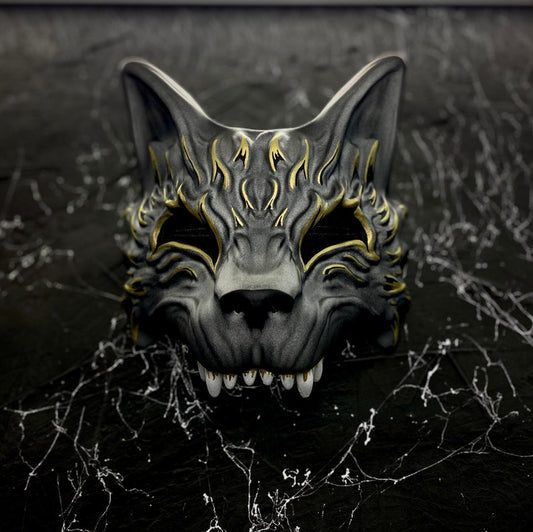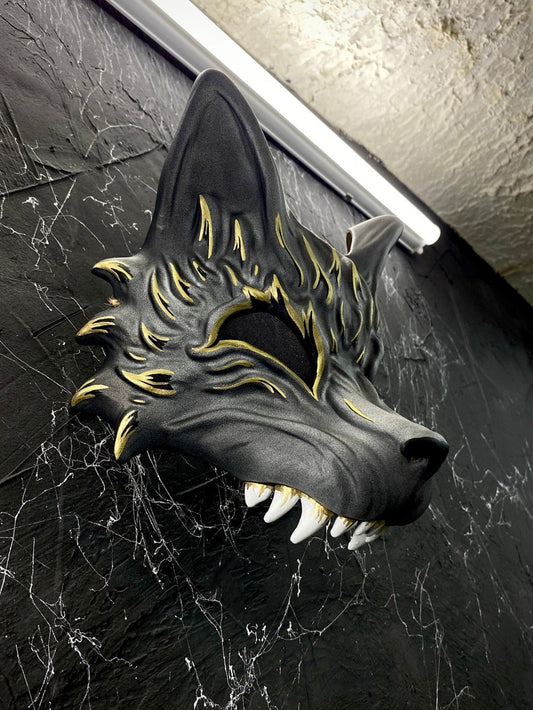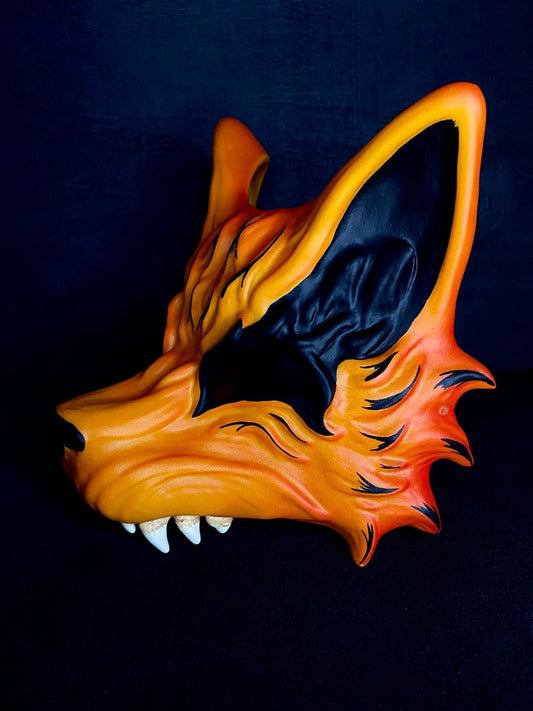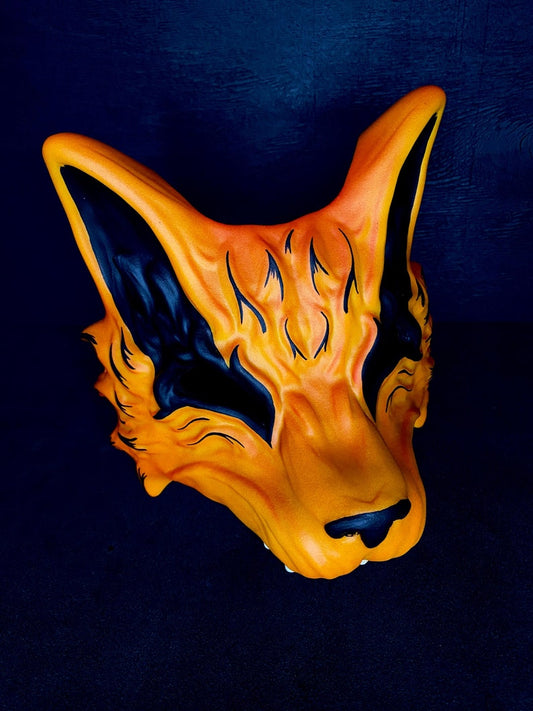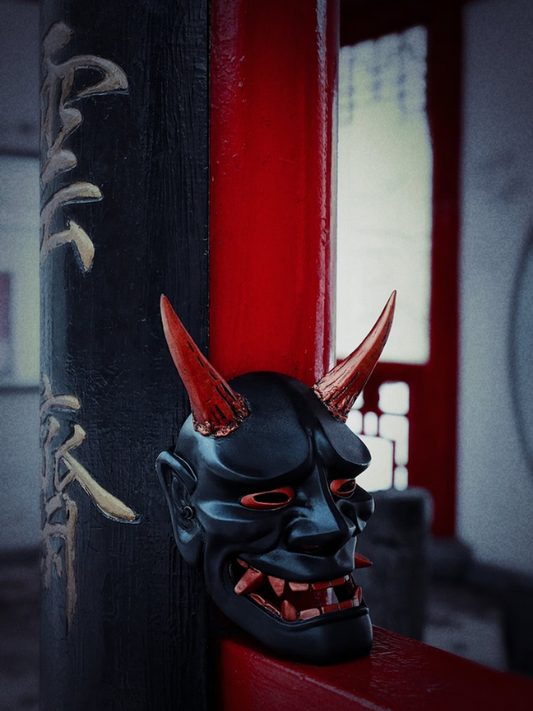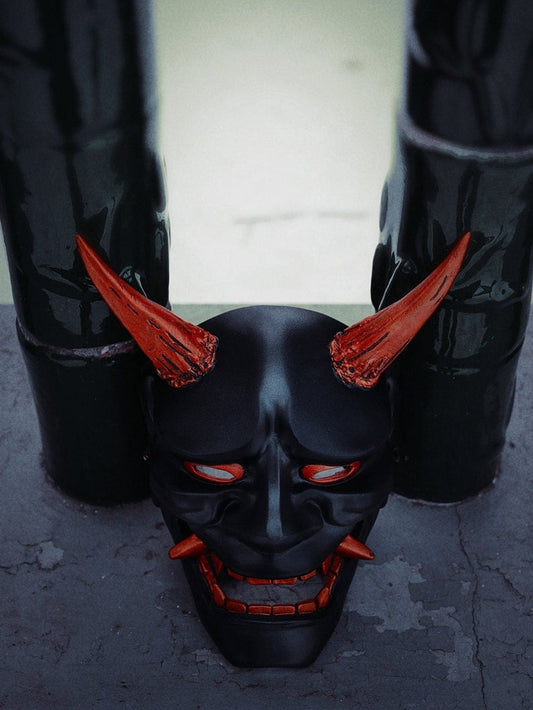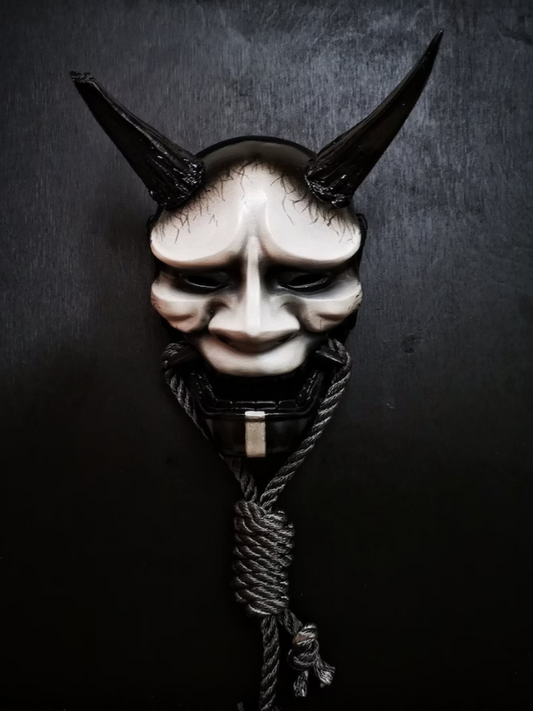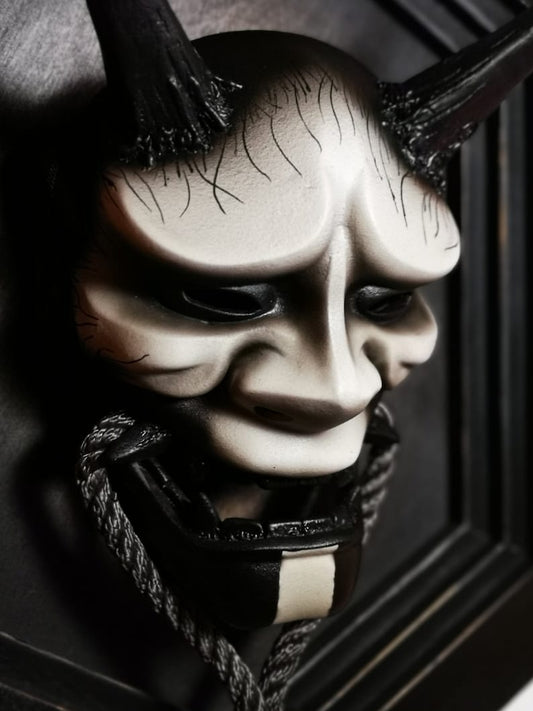Japanese Masks
Most Recent Creations
-
Fox Mask / Grey and Gold Kitsune
Regular price $279.00 USDRegular priceUnit price / per -
Fox Mask / Orange Kitsune
Regular price $270.00 USDRegular priceUnit price / per -
Hannya Mask / Black and Gold Demon
Regular price $339.00 USDRegular priceUnit price / per -
Hannya Mask / Black and White Demon
Regular price $339.00 USDRegular priceUnit price / per
Japanese Folklore Masks
These masks are inspired by Japanese mythology and folklore. Notable examples include the Kitsune masks, symbolizing fox spirits, and the Hannya masks, representing a woman transformed into a demon by intense jealousy. They are often used in performances and rituals to tell stories and impart moral lessons.
Theatrical Japanese Masks
These masks are central to traditional forms of Japanese theater such as Noh, Kyogen, and Kabuki. Notable masks include the Noh masks, used to portray various characters from women and demons to deities, and the Kabuki masks, used in dance dramas. Each mask is crafted to allow a skilled actor to portray a range of emotions with subtle movements.
Ritual and Festival Masks
These masks are used in religious rituals, ceremonies, and festivals. Examples include the Tengu masks, used in Shinto festivals and by mountain ascetics, and the Oni masks, used in Setsubun celebrations to chase away evil spirits. They are often vibrant and dramatic, designed to attract attention and convey the festive spirit.
Samurai Masks
Also known as Mempo, these masks were part of the traditional samurai armor. They served a practical purpose in providing protection, but also symbolized the status and personality of the wearer.
Artistic & Decorative Masks
In modern times, traditional Japanese masks have found a place in art and interior décor, prized for their craftsmanship and cultural symbolism. They're also popular in fashion and tattoo artistry, symbolizing various attributes such as strength, protection, or overcoming adversity.

